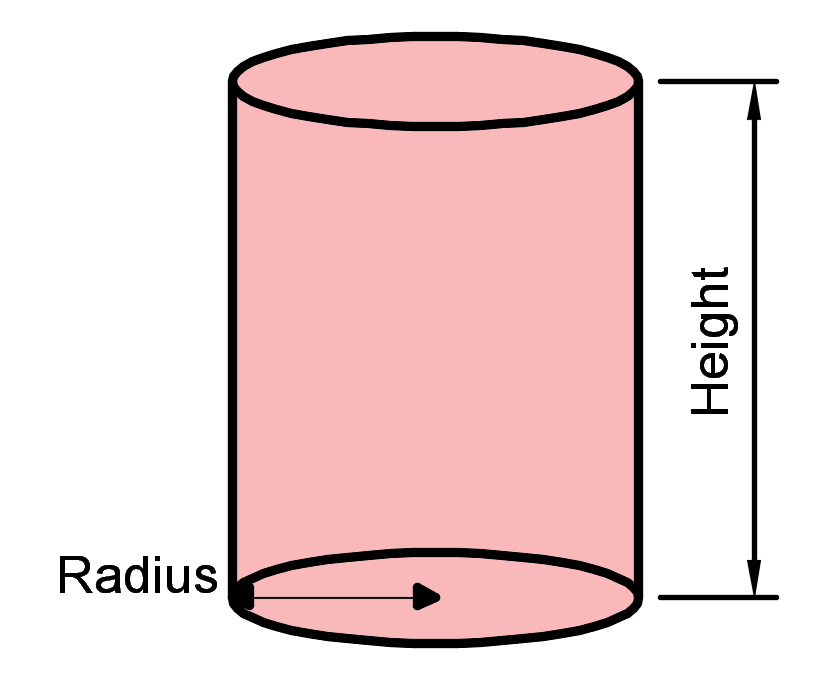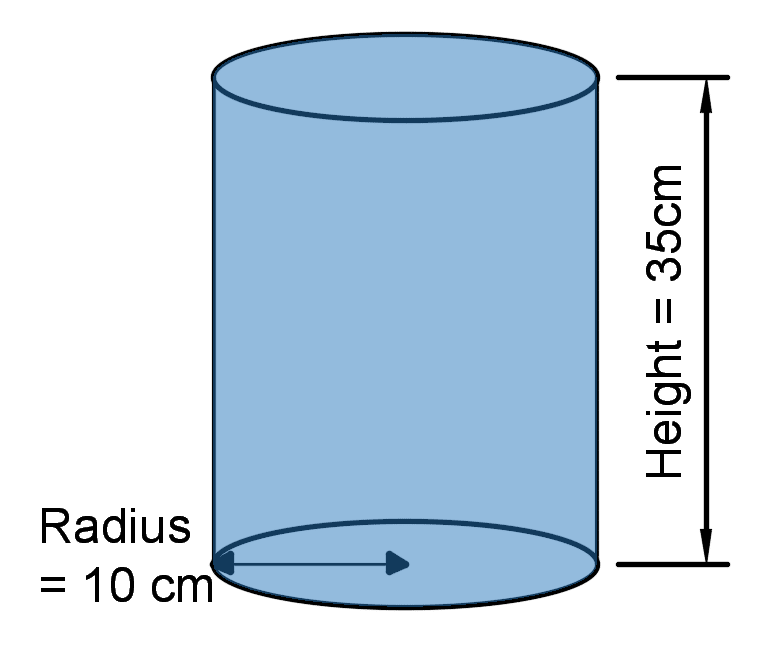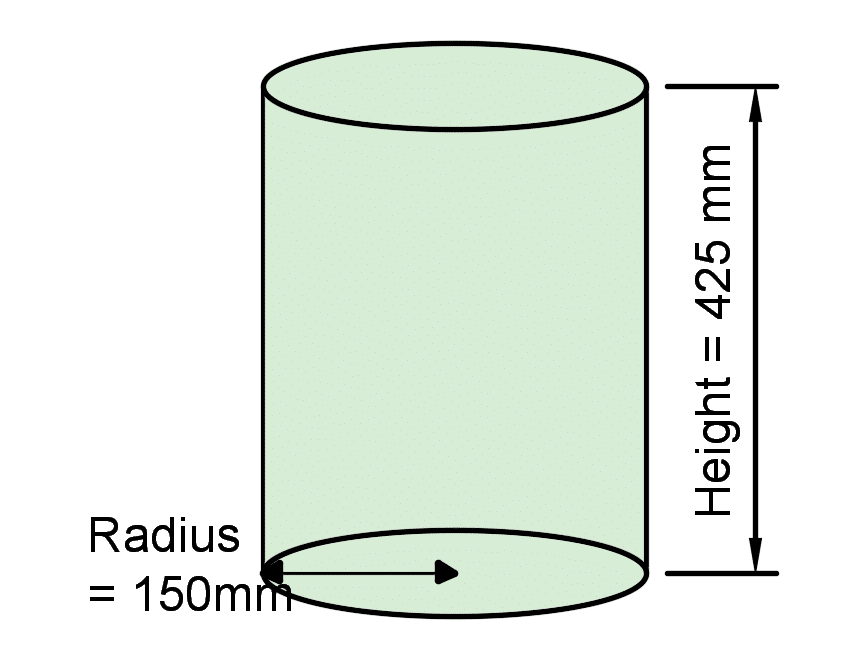Calculation of Cylinder Surface Area
Table of Contents
Surface Area of a Cylinder
A cylinder is a cylindrical object with two circular flat ends and one curved side. It has the same cross-sectional area along the length of the shape. The formula and example calculations are shown further below in this article. (2*π*r)*h + 2(π*r2).
In reality, we see cylinders used in everyday life. They are metal cans, bins and other useful objects. This article includes two example calculations, which commonly come up in exams and is useful to know.

The cylinder surface area is the sum of the areas of each end and curved surface.
Surface area of both ends = 2πr2
Surface of curved surface = 2 π rh
Total cylinder surface area = 2 π rh + 2πr2
Formula for Surface area of a cylinder = (2*π*r)*h + 2(π*r2)
Surface Area of a Cylinder Example 1

A cylinder has radius of 10 cm and a height of 35 cm. What is the surface area of the cylinder?
Solution:
The surface area of cylinder formula is (2*π*r)*h + 2(π*r2)
Surface area = (2*π*10)*35 + 2*(π*102)= 2827 cm2
This can also be written as 0.2827 m2 (2827 multiplied by 10-4 to convert from cm2 to m2).
Note – remember to check units when calculating the surface area.
Surface Area of a Cylinder Example 2

A cylinder has radius of 150 mm and a height of 425 mm. What is the surface area of the cylinder?
Solution:
The surface area of cylinder formula is (2*π*r)*h + 2(π*r2)
Surface area = (2*π*150)*425 + 2*(π*1502)= 541,924 mm2
This can also be written as 0.542 m2 (541,924 multiplied by 10-6 to convert from mm2 to m2).
Note – remember to check units when calculating the surface area.
